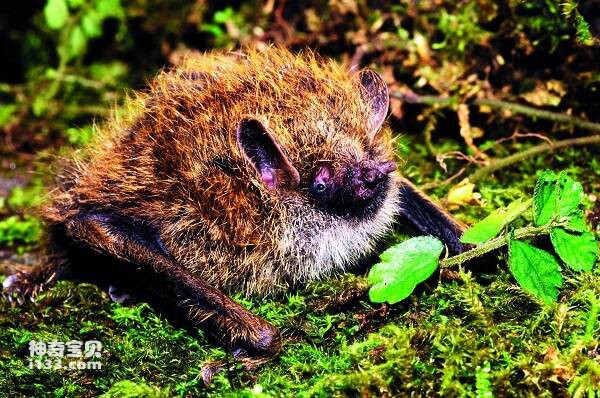Murina aurata
IUCN
LCBasic Information
Scientific classification
- name:Murina aurata
- Scientific Name:Murina aurata
- Outline:Chiroptera
- Family:Chiroptera batidae
Vital signs
- length:
- Weight:
- lifetime:
Feature
The nostrils are tubular, slender and long, and turn upward.
Distribution and Habitat
It is distributed in Sichuan, Gansu, Hainan and Guangxi in China. It is distributed abroad in northeast India, Nepal, Myanmar and Thailand.
Appearance
Small size, forearm length 28-32mm. The nostrils are tubular, slender and long, and turn upward. The ear shell is wide oval, the posterior margin is not indented, the tragus is narrow, and the end is pointed. The back hairy base is gray black, the tip is golden; The ventral hairy base is gray black, and the tip is gray white. The alar membrane is wide and hairless. The pleura, interfemoral membrane, tail, and hind feet are covered with sparse long hairs. The free edge of the alar membrane terminates at the outer edge of the base of the claw pad of the first toe of the hind foot, while the posterior edge of the interfemoral membrane begins at the posterior calcaneus, without calcaneus. The tail end is slightly protruding from the interfemoral membrane about 1mm. The tibia is short, the hind feet are small, the toes are slender, and the claws are small and curved and sharp. The snout of the skull is long and narrow, the snout is not thick and strong, and the middle line has a shallow gro
Details
Golden tube-nosed bats are small, with forearms 28-32mm long. The nostrils are tubular, slender and long, and turn upward. The ear shell is wide oval, the posterior margin is not indented, the tragus is narrow, and the end is pointed. The back hairy base is gray black, the tip is golden; The ventral hairy base is gray black, and the tip is gray white. The alar membrane is wide and hairless. The pleura, interfemoral membrane, tail, and hind feet are covered with sparse long hairs. The free edge of the alar membrane terminates at the outer edge of the base of the claw pad of the first toe of the hind foot, while the posterior edge of the interfemoral membrane begins at the posterior calcaneus, without calcaneus. The tail end is slightly protruding from the interfemoral membrane about 1mm. The tibia is short, the hind feet are small, the toes are slender, and the claws are small and curved and sharp. The snout of the skull is long and narrow, the snout is not thick and strong, and the middle line has a shallow groove, which can reach the orbital part. The maxillary first premolar is much smaller than the second premolar. Mandibular canines have lower crowns, about the same height as the first premolar. Gear type: 2.1.2.3/3.1.2.3=34.

Wang Yingxiang (2003) lists Tibet and Yunnan as a subspecies <M. A. feae Thomas>, 1891 (Wang Yingxiang spelled feai), but Maeda (1980) considers it a synonym for <M. aurata>. This species is easily confused with M. eleryi, a new species published in 2009 from northern Vietnam.









